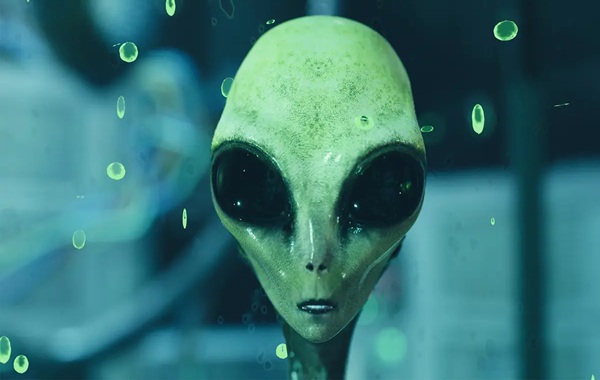If aliens exist, they may be far away and 280,000 years older than humanity: Study
Imagine if the nearest intelligent aliens were not across the street, not across the solar system, but on the far side of the Milky Way, some 33,000 light-years away from Earth.
That’s the scenario painted by a new study, which finds that if alien civilizations exist, they are probably rare, distant, and most likely millions of years older than humanity. According to the study authors, the odds of another technological species existing at the same time as us are slim.
This is because finding a world with the right atmosphere, chemistry, and geological activity is like hunting for a cosmic needle in a haystack, and this is why the search for extraterrestrial intelligence (SETI) has been such a struggle.
“Extraterrestrial intelligences—ETIs—in our galaxy are probably pretty rare,” Manuel Scherf, one of the study authors, and a researcher from the Space Research Institute, Austrian Academy of Sciences, said.
The chemistry of life on Earth
The study authors began their study with a simple but important question. What makes a planet truly capable of supporting life that can evolve into a technological civilization? They identified a few key ingredients.
First, the atmosphere. Earth’s air is dominated by nitrogen (78 percent) and oxygen (21 percent), with a tiny but vital fraction of carbon dioxide (0.042 percent). On other planets, this balance is critical.
Too little carbon dioxide, and the biosphere eventually collapses because plants can’t photosynthesize. Too much, and the world tips into a runaway greenhouse effect or becomes toxic.
Plate tectonics helps regulate this balance through the carbon–silicate cycle, pulling carbon dioxide out of the atmosphere and recycling it over geological time. However, there’s a catch: eventually, too much of this gas becomes locked away in rocks, and photosynthesis stops.
“At some point, enough carbon dioxide will be drawn from the atmosphere so that photosynthesis will stop working. For Earth, that’s expected to happen in about 200 million to roughly 1 billion years,” Scherf said.
A reality check on alien existence
To test different scenarios, the team modeled atmospheres with more carbon dioxide. They found that a planet with 10 percent carbon dioxide could keep a biosphere alive for about 4.2 billion years. A planet with one percent carbon dioxide would manage around 3.1 billion years, but carbon dioxide isn’t the only dealbreaker.
Oxygen levels had to be at least 18 percent. That much oxygen isn’t just needed for large, complex animals but is also essential for fire. Without fire, smelting metals would never be possible, and without metal, no technological civilization could arise.
Next came the question of timing. It took 4.5 billion years on Earth for intelligent life to evolve into a species capable of building technology. Using this as a reference point, the study authors compared how long biospheres could last with how long it takes civilizations to appear. Then they factored in how long such civilizations might survive.
The math revealed something shocking. On a planet with 10 percent carbon dioxide, a technological civilization would need to last for at least 280,000 years for humanity to have even one neighbor in the galaxy living at the same time.
So “for 10 civilizations to exist at the same time as ours, the average lifetime must be above 10 million years,” Scherf added. That’s far longer than the few thousand years humans have been technological.
This leads to a striking conclusion that if we ever do detect another intelligent civilization, it will almost certainly be much older and more advanced than our own. Based on their calculations, the study authors estimate the closest one is about 33,000 light-years away—placing it on the other side of the Milky Way.
The search for aliens must go on
The research presents a challenging picture for SETI. It suggests that the odds of intelligent life evolving, developing technology, and surviving long enough to overlap with us are very low, and the distances involved make detection even harder. Still, the researchers emphasize that the search must go on.
“Although ETIs might be rare, there is only one way to really find out, and that is by searching for them. If these searches find nothing, it makes our theory more likely, and if SETI does find something, then it will be one of the biggest scientific breakthroughs ever achieved, as we would know that we are not alone in the universe,” Scherf explained.
The research is also a reminder of how unique and fragile Earth’s biosphere really is. The balance of gases in our atmosphere, kept in check by plate tectonics, is delicate and not permanent, which means we cannot afford to disturb it.
Source: Interesting Engineering
Particles Shot Out of The Sun Reveal Distinct Patterns, Scientists Find
If aliens exist, they may be far away and 280,000 years older than humanity: Study/If aliens exist, they may be far away and 280,000 years older than humanity: Study

